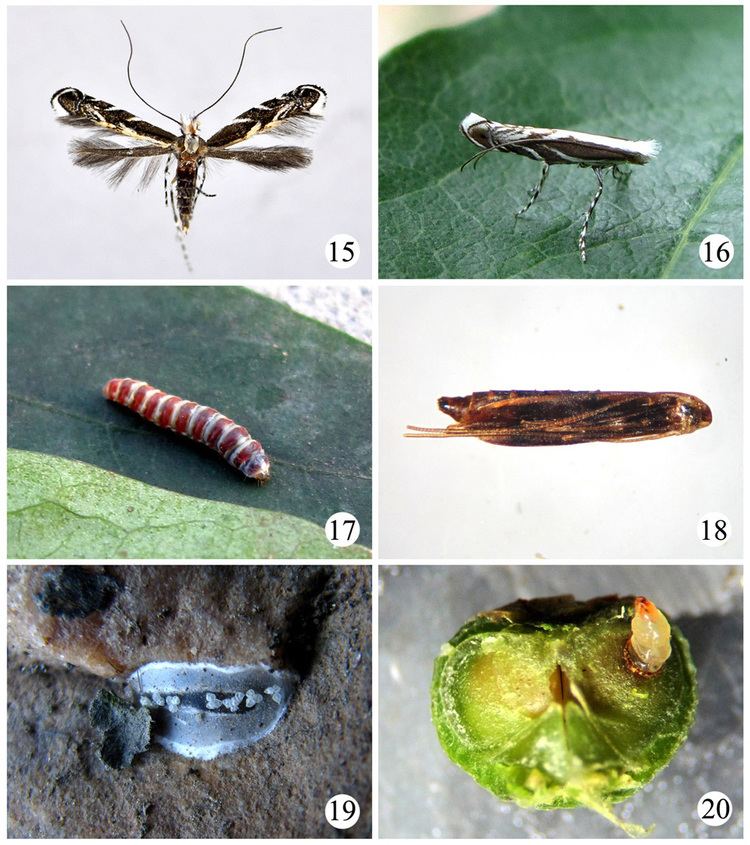Higher classification Epicephala | Scientific name Epicephala relictella Rank Species | |
 | ||
Similar Epicephala, Gracillariidae, Butterflies and moths, Insect | ||
Epicephala relictella is a moth of the Gracillariidae family. It is known from the Russian Far East, China (Tianjin, Hebei, Heilongjiang, Gansu) and Korea.
Contents
Adult
The wingspan is 9–13 mm. The head is white and tufted. The tegula and forewing are greyish brown with white stripes and a large black spot near the apex. The dorsal margin is white tinged with ocherous yellow, longitudinally forming a broad band. The abdomen is greying brown on the dorsal surface except for the first two segments which are grey.
Egg
The egg is oval and has a diameter of about 0.15–0.20 mm. The surface is smooth and shiny. At first, it is yellowish white and nearly transparent, then becoming straw yellow before hatching.
Larva
Young instar larva are very similar to that of Conopomorpha flueggella. Mature larva are 5–6.5 mm. The head capsule is brownish yellow and the median two-thirds of each segment on the thorax and abdomen is dark red while the anterior and posterior ends are white. The thoracic segments are slightly blue and there are blue spots on the abdominal segments. There are sparse white setae on the body.
Pupa
The pupa is 4–5.5 mm and fusiform. It is greenish yellow in the early pupal stage, changing gradually to dark brown.
Cocoon
The cocoon is 6–8 mm, white, flat elliptic, with some white grains attached on the surface.
Food plant
The larvae have been recorded feeding on the seeds of Flueggea suffruticosa.
Life history
There is one generation per year in Tianjin, China. The larval stage is completed within one fruit. When completing larval development, the mature larvae quit the fruits and pupate on the leaves, and overwinter under leaf litter or stones. Adults appear from June to July. They can emerge during the whole day, but the peak occurs in the morning. The moths are most active at night, drinking nectar and ovipositing. During the daytime they rest on leaves or branches. Adult longevity is three to ten days, but adults generally live for five to seven days. Adults hardly come to light.
